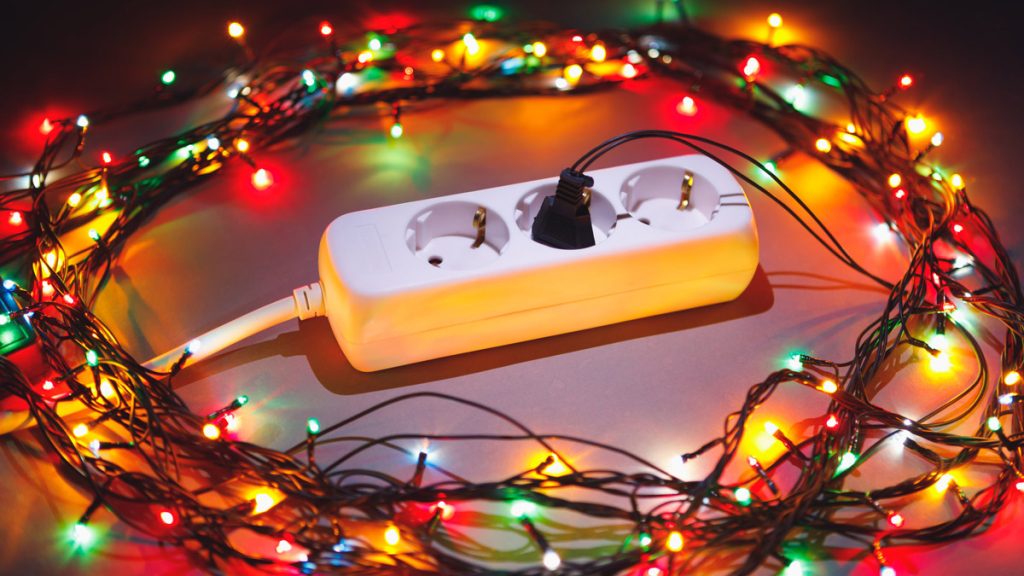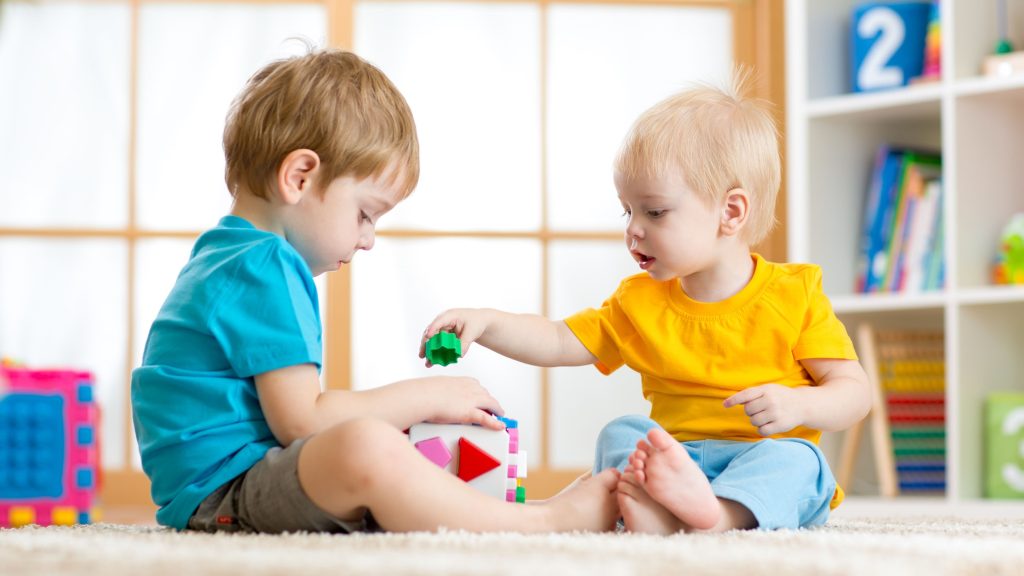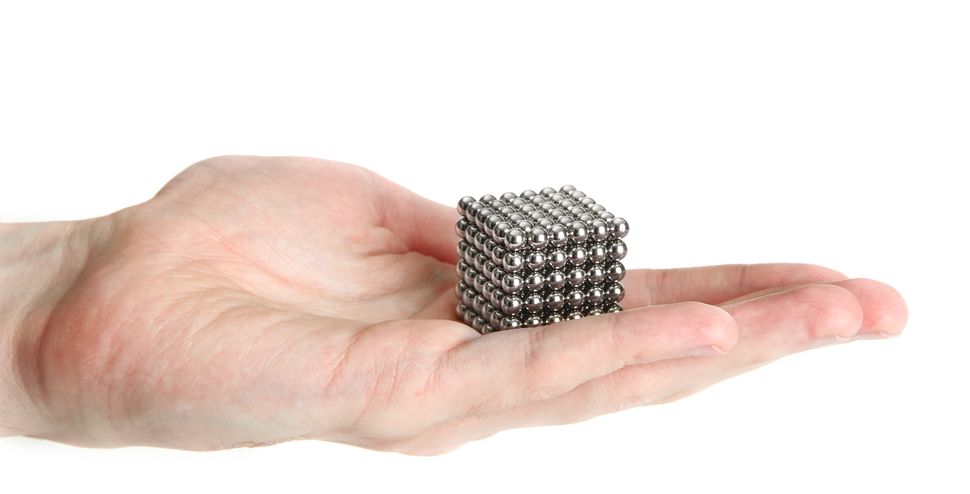Posts Tagged ‘“product liability lawyers”’
Deck the Halls, But Decorate Safely
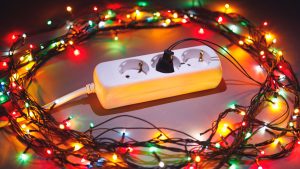
Immediately replace holiday decorations and power appliances that are in poor condition. Another year of use could result in injury.
Though a time for joy, the holidays can also set the stage for potential injuries, as we rush, stress, decorate and wrap. Surprisingly, you may discover some of the most dangerous hazards right in your own home, among the holiday decorations and boxes you pull of storage to deck the halls.
While colorful and festive, holiday decorations contribute to many injuries each year. During 2019, nearly 15,000 people were injured in holiday decorating incidents and treated in emergency rooms, according to the Consumer Product Safety Commission (CPSC). Nearly half of these injuries involved falls. Many others are injured each year after the decorations are hung, by defective or poorly-made products or decorations that are set up unsafely.
Unlike some situations, you have control of your home and can take steps to protect yourself, your family and holiday guests.
Start by simply walking around your home and checking your holiday decorations and your Christmas tree, if you have one. Make sure all your decorations are out of reach of young children and put away all tools, such as ladders and hammers, or boxes you may have left out while decorating.
Watch for unsafe products, such as those which arrive in questionable packaging or contain broken or small parts. Manufacturers have a responsibility to design products and provide reasonable warnings for safe use. There can be a high cost when manufacturers or others in the supply chain neglect their responsibilities in the rush to sell, or when individual sellers on Craigslist or Facebook Marketplace offer used goods without the original packaging. But it can happen and ruin a family’s holiday – unless you recognize the risk and act to prevent injury.
Use Caution While Hanging Holiday Decorations
Still have some decorating to do? Remember not to rush. During a season of merry and bright, you want to be safe and avoid injury. Holiday decorating can cause a range of injuries, from passing muscle strain to broken bones, though injuries can be much more serious, resulting in head injuries and even permanent disability. At a minimum, many people experience some muscle strain the next day after reaching and climbing. Planning can help!
So make a decorating plan. Team up with a family member or a friend so you have help carrying heavy boxes or using ladders or step stools.
Consider whether you are physically up for holiday decorating. As you get older, you may not be able to take on the same physical challenges. Acknowledge this before you start.
While you may be thinking, “Bah humbug,” you can still decorate. Just make a few adjustments for safety or to account for your late start. You can hang fewer holiday lights and hang them lower so you can stay off ladders, which are associated with many fall injuries during the holiday season.
Decorators of all ages should consider the cold weather. Even without snow or ice, you face a greater risk for muscle strain and injury during cold weather. It is never safe to climb a ladder in snow, ice, rain, winds or at night.
Water Your Christmas Tree Regularly
If you celebrate Christmas, your tree is the center of your holiday season, where you gather for family photos. But you should only purchase a live tree if you are home and have time to care for it.
Just as they bring joy, Christmas trees can cause devastation if they dry out and catch on fire. Each year, fire departments respond to an average of 160 Christmas tree fires across the U.S., resulting in injuries, deaths and millions of dollars in direct property damage, according to the National Fire Protection Association. These experiences can change a family and the holidays forever.
If you have already brought your tree inside, you may have cut 2 inches off the bottom before placing it in the tree stand. Now, your concern is watering the tree.
Regularly water your Christmas tree and keep it away from fireplaces and heating devices, which can accelerate drying out. The National Christmas Tree Association recommends that families check their tree daily and make sure the water level does not fall below the base of the tree.
Your Christmas tree stand is one of your most important holiday decorations in terms of safety. Choose one which can hold enough water to support your tree’s needs throughout the year. As a general rule, the association recommends stands provide one quart of water per inch of stem diameter.
If you are not up for a live tree, go artificial. Make sure your artificial Christmas tree is marked “flame-resistant.”
Watch for Defective Products and Check Holiday Extension Cords for Safety
Closely examine holiday decorations and equipment before you start decorating. Your trusted tools and supplies may have been recalled for safety since your last use or may not work well with newer products you have purchased.
Check ornament boxes for cracks; make sure ladders and foot stools are in good working condition, if you have to use them. Extension cords should be free from damage and cracks.
This is easy to forget. Many of us reach for extension cords after we start setting up decorations, not first. But here are a few points for safety on extension cords:
- Extension cords should be tested by a nationally recognized testing laboratory, such as Underwriters Laboratories (UL), Intertek (ETL) or CSA Group Testing and Certification. Similarly, holiday lights should also be tested.
- You should only use one extension cord at the most, so measure and buy one that meets your needs.
- Make it a habit to check for safety recalls before you plug your holiday extension cords in. Just visit www.cpsc.gov and search for extension cord recalls
- Replace your extension cords every few years. You trust these cords to light up your holiday and protect your family and home over the years, yet you expose them to more wear and tear than other products when you string them around your tree, furniture and take them in and out of storage each year.
Keep a Safe Home for Holiday Guests and Children
Consider what may be in a child’s reach or limit an older guest’s mobility. Move ornaments and decorations with small pieces and sharp edges out of reach. Remember children are curious and may pull at decorations or small broken lights found under a tree or plastic packaging you may have dropped while wrapping gifts. A child could find these, put them in their mouth and choke or suffocate – the worst thought for the holiday season.
Look beyond your holiday decorations as well. You may not be able to see all the hazards, so think about how your home products are powered. For example, flashlights and electric holiday lights may contain small button batteries, which a young child could find and swallow. So may your remote controls, including those you use to manage your holiday lights, and these can be too easy for children to open. You may treasure the holiday cards you receive, but these can also tempt children. Tuck away cards with removable pieces.
It is critical to think about fire prevention, especially before you invite guests into your home. Take a moment to test your smoke alarms. As we mentioned above, keep holiday decorations away from working fireplaces and stoves. Turn these appliances off when you have guests over and skip candle use for holiday ambiance or at the holiday meal.
Finally, we often hang or position decorations near entrances or hallways where people can enjoy them. This can bring joy, but block access to essential exits if a fire ever broke out. It is best to enjoy these somewhere else and keep all entrances and hallways clear.
Free Legal Consultation – Boston Personal Injury Lawyers
Breakstone, White & Gluck specializes in personal injury law, representing those who have been injured or killed by negligence across Massachusetts, including in Boston, Cambridge, Somerville and Arlington.
With more than 100 years combined experience, our lawyers have been recognized among the top personal injury attorneys in Massachusetts and New England. We represent clients in all areas of personal injury law, including injuries and wrongful death resulting from defective products.
If you have been injured by someone else’s negligence, learn your legal rights. For a free legal consultation, contact Breakstone, White & Gluck at 800-379-1244 or use our contact form.
Child’s Death on Peloton Treadmill Prompts New Safety Warnings

While convenient for parents, at-home treadmills, stationary bikes and fitness equipment can cause children serious injuries.
If you have jumped on the Peloton bandwagon, you are not alone. But many parents are exercising with more caution this week after learning about a child’s tragic death on a Peloton treadmill. Consumers are being urged to keep children away from the fitness equipment, as the Consumer Product Safety Commission (CPSC) investigates.
Peloton Interactive, Inc. became a household name during the 2019 holiday season, with a tongue-in-cheek ad campaign that poked fun at a husband and his “Peloton wife.” Then the pandemic began and Peloton became the fast rising star of the fitness industry. Many rushed to set up a high-end stationary bike or treadmill right at home, then logged into the fun digital app.
Peloton’s CEO announced the child’s death on a Tread+ last week in a letter, revealing the company was also aware of a small handful of other Tread+ accidents involving children. While he cited no injuries in these cases, NBC later reported that another child, a 3-year-old boy, had suffered serious injuries after being found trapped under a Peloton Tread+.
According to SaferProducts.gov, the child’s father had found the boy trapped under a Peloton Tread+ in early February. Initially, he was not breathing and had no pulse. The boy suffered a significant brain injury, along with a neck injury and petechiae on his face, which can occur when one’s blood flow is blocked. Peloton learned about the incident from the CPSC and said the company’s heart went out to the family.
If you or your child has been injured by an unsafe product, you should receive immediate medical care and report your injury promptly to help warn others. You do not have to make a report on your own. Report the incident with guidance from an experienced product liability lawyer at Breakstone, White & Gluck, who can advise you of your legal rights.
Treadmill Injuries
This is a timely investigation and conversation. Many families have purchased fitness equipment to use from the convenience of their homes as they juggle family and work responsibilities under COVID-19 restrictions. As a result, treadmill sales rose over 120 percent between March and October 2020, according to the Washington Post. Stationary bike sales nearly tripled.
Treadmills, though a convenient way to exercise from your home and office, are associated with many fitness equipment injuries. Across the country, emergency rooms treated an estimated 22,500 treadmill-related injuries during 2019, according to the CPSC. Children under 8 suffered about 2,000 injuries. There were 17 fatal injuries on treadmills between 2018 and 2020, including a 5-year-old girl.
Using Treadmills Safely in Your Home
According to Consumer Reports, children ages 1 to 6 suffer the most treadmill injuries of any age. Older siblings can also be injured when they just want to try the equipment and interactive features that look like video games.
Consider that young children are often just learning how to ride their first bike and developing their coordination skills. They are not strong enough to use a heavy, mechanical piece of equipment, not even for just a moment under an adult’s supervision.
Treadmill companies have a duty to warn consumers about the potential harm to children and how to prevent injuries to children. Manufacturers also have to watch how they showcase fitness equipment in ads and commercials. If a consumer sees a bike set up in a living room or family space, this may leave the impression that this is safe near children and families.
You can take steps to protect your children by securing fitness equipment in a separate room, away from your children and pets. Just as important, remove the safety key when you are done using the treadmill and fold it up if possible.
Mechanical Defects and Other Issues with Treadmills
When you buy fitness equipment, you may wonder whether you will enjoy using it or if it will be worth the investment. No one expects to be injured or see their child injured.
Yet there are many defective and unsafe products sold each year. This includes defective equipment which should have never been sold due to defective design or manufacturing error. Injuries can also happen when a manufacturer fails to warn the consumer about unsafe use. Manufacturers have a duty to promptly report when their products cause injury or wrongful death.
Many treadmill injuries can be traced back to poor manufacturing. Consumers have no warning about mechanical problems, such as spinning belts and erratic motors, until they use the machines. As a result, a consumer can lose their stop or fall, first hitting a moving treadmill and suffering head injuries or skin lacerations.
Improper set up can also contribute to injuries. Treadmills should come with instructions on where to safely place the equipment in your home or office. When a user misses a step, they are much more likely to get caught in the tread mat or hit a wall if they do not have adequate space. Read the instructions carefully as treadmills can come in different weights and sizes at times. As a guide, consider the ASTM International treadmill recommendations are to leave at least 6 1/2 feet of free space behind the treadmill. There should be about 1 ½ feet on each side. But your model may have different specifications.
Incomplete or incorrect labeling is another source for fitness equipment injuries. Without proper warning, the consumer cannot make the best decision about whether the product is safe for purchase and use in their home environment.
In addition to larger fitness equipment, be aware of small accessory equipment. Weights, air-filled exercise balls and yoga straps all look simple to use. But these fitness products can be poorly made with cheap materials, making them unsafe for both children and adults.
In one recent case, one of our attorneys led an investigation and negotiations which resulted in a $1.15 million product liability settlement for our client.
Free Legal Consultation – Boston Defective Product Attorneys
Breakstone, White & Gluck of Boston is committed to providing our clients with aggressive and thorough representation. If you or someone in your family has been injured by an unsafe product, contact our product liability lawyers. We serve clients across Massachusetts, including in Boston, Cambridge, Waltham, Framingham, the North and South Shores, Cape Cod, Fall River and Worcester. For a free consultation, call 800-379-1244 or 617-723-7676 or use our contact form.
How to Avoid Buying a Recalled Toy or Product This Holiday Season
 When a product is recalled, you may expect it will be removed from store shelves or online marketplaces. This is not always a safe assumption. In this year’s Trouble in Toyland report, U.S. PIRG reports several toys which were recalled this year were still being sold afterward on popular websites. Last year, a Wall Street Journal investigation found Amazon was selling thousands of unsafe or banned products.
When a product is recalled, you may expect it will be removed from store shelves or online marketplaces. This is not always a safe assumption. In this year’s Trouble in Toyland report, U.S. PIRG reports several toys which were recalled this year were still being sold afterward on popular websites. Last year, a Wall Street Journal investigation found Amazon was selling thousands of unsafe or banned products.
These are upsetting headlines. The Consumer Product Safety Commission (CPSC) recalls toys when they pose a safety hazard to children. Recalls are typically only called after a report or several reports of injuries or near injuries.
Once a toy is recalled, consider it unsafe to use. Our Boston product liability lawyers share our safety tips for steering clear of unsafe toys this holiday season:
Look Up Past Toy Recalls
Visit the CPSC website and review product recalls for 2020. According to U.S. PIRG, 10 products were recalled in the 12 months between the release of its 2019 and 2020 report.
You can visit this website after you have selected a toy and before you make a purchase. Or it may be helpful to start your holiday shopping there. Search for “toy recalls” or look through all the product recalls. Note that this website does not include automobile recalls. You can find these on the National Highway Traffic Safety Administration (NHTSA) website.
Beware of Amazon, Ebay and Marketplace Websites
Some retailers only offer their own products online. Others – such as Amazon and Ebay – are marketplaces where different vendors sell products and toys. These products may be new or they may be used.
Both the sellers and websites have a responsibility to make sure they are not selling recalled products.
In August 2019, the Wall Street Journal reported that Amazon was selling more than 4,000 items which federal agencies had declared unsafe or banned. Others had misleading labeling. At least 2,000 listings were for unsafe toys and medications.
The story showed the challenges Amazon has regulating its own marketplace. If you shop on Amazon or EBay, look for information about the seller. Is a company the seller or an individual? If you have never heard of the seller, you may not want to make a purchase.
Watch for Small Parts
When buying online, one potential danger is buying a toy which contains small parts. To protect your children, always read age recommendations and look for warning labels.
Toys which are designed for children under age 3 should be labeled if they contain small parts. Toys for children age 3 to 6 must also be labeled if they contain small parts. Read our blog on identifying small parts and toy safety warnings.
Beware of Purchasing Toys on Social Media Sites
You may have heard of Facebook Marketplace or other social media sites where you can sell used toys and products. Avoid buying used toys for children here during the holidays. We also suggest you avoid buying toys from these sites during other seasons, but especially during the holidays when many of us just wait for online sales to pop up.
There is no quality control. In most cases, the product is no longer in the packaging so you can’t read the safety warnings and age recommendations.
If you buy a used product this way, you really have no way of knowing when it was purchased. You may not have a product number or product instructions.
Children’s products, such as cribs, car seats and strollers, may carry the greatest risks. These products are frequently recalled and many model types look similar. While it is illegal to sell recalled products, it happens.
One frightening story came after Fisher Price and Kids II issued their crib recalls in early 2019. Despite this, 1 in 10 daycares was still using a Fisher Price Rock n’ Play sleeper in August 2019. In Nov. 2019, Consumer Reports reported found hundreds of the recalled sleepers available online, on sites such as Craigslist and Facebook Marketplace. In addition, Consumer Reports warned other products – including Ikea dressers recalled in 2016 were still being sold.
Free Legal Consultation – Boston Toy Safety Lawyers
With more than 100 years combined experience, Breakstone, White & Gluck of Boston specializes in the representation of clients injured by unsafe or defective toys and products. We are writing about toy safety this holiday season to help parents and families make safe shopping decisions. Read our past toy safety blogs.
For a free legal consultation, contact the Boston toy safety lawyers at Breakstone, White & Gluck at 800-379-1244 or 617-723-7676. You can also use our contact form.
Trouble in Toyland Report Shares Toy Safety Tips for Holiday Shoppers
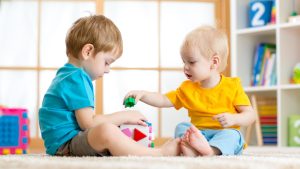 Families often enjoy looking through toy catalogs together this time of year. After seeing what excites your child, you may be tempted to immediately order their holiday gifts. However, before you do, we encourage parents and grandparents to check the Trouble in Toyland report.
Families often enjoy looking through toy catalogs together this time of year. After seeing what excites your child, you may be tempted to immediately order their holiday gifts. However, before you do, we encourage parents and grandparents to check the Trouble in Toyland report.
The 35th anniversary Trouble in Toyland report was recently released. This year, U.S. PIRG warned about the dangers of:
- Mislabeled choking hazards
- Flocked animal figures (toys with small attached pieces)
- Recalled toys which may still be available online
- Noisy toys
- In-app purchases
- Not advisable for children
Choking Hazards
Parents are advised to look for small part warnings on toys. “Small part” is not a subjective term. It is anything that fits within the Consumer Product Safety Commission’s toy test cylinder. The test cylinder measures 2.25 inches long and 1.25 inches wide and is roughly the size of a young child’s throat. A small part may be a game piece or a marble of the right size. It may also include a toy accessory, such as doll clothing.
The most common “small parts” warning: “WARNING: CHOKING HAZARD–Small Parts. Not for children under 3 years.” Toys designed for children ages 3 through 6 must also carry warning labels indicating they are not safe for children under 3.
Parents can become familiar with the risks by reading this year’s Trouble In Toyland. Make it a priority not to purchase a product with small parts and bring them into your home. Always read toy safety and age appropriate labels. Doing so puts you on a path to protect your family.
Flocked Toys
If you purchase a toy figurine or doll that comes with accessories, such as ribbons or clothing, remember your child can put those small parts in their mouths. Calico Critters – the popular animal family figures – are now under scrutiny.
One child was killed while playing with a set containing a small pacifier in New Mexico, according to a court filing. Another child in Utah also choked on the pacifier accessory, according to the a local news website, and shared in the Trouble in Toyland report. Both children were under 3 years old.
Fortunately, there are many versions of toys. If you find a toy you like and it has small fabric parts, keep looking until you find one without removable accessories.
Online Toy Shopping
Trouble in Toyland shared a valuable insight about searching for holiday toys on Amazon. If you search for “toys for 2-year-old boys,” for instance, you may see a number of listings which do not provide a small part warning. Do not trust that searching by year means toys are screened for safety. Remember, Amazon is a marketplace of merchants, not just one company. Closely look at product descriptions before making a purchase. In addition to reading reviews, you want to confirm the details. Look at the product picture, then read the description. Double check the product packaging once it arrives by mail and open it to confirm it has the parts you expected.
Beware of recalled toys as well. Since the 2019 Trouble in Toyland, the Consumer Product Safety Commissioned issued 10 toy recalls in the U.S., according to this report. When a product is recalled, it should be immediately removed from the store shelves and online listings. Some toys were still being sold online after recalls. Researchers even found one toy – a Fisher-Price Barbie Dream Camper which was recalled in February 2019 – still on sale. The camper was an outdoor riding toy for children. The CPSC received 17 reports of campers continuing to travel after the foot pedal was released.
Not Advisable For Children
Also featured was a section called, “items not advisable for children.” These items are not really toys, but are given to children as toys. At the top of the list is high-powered magnet desk sets. We wrote about the dangers of high-powered magnet sets last holiday season. Magnet sets may seem like fun gifts for adults, but you should never purchase one because they are so dangerous and the small parts can stick around your home forever. Children can be tempted to play with these magnets and swallow them. At this point, the magnets can attempt to connect together in a child’s stomach. The magnets touched on some serious personal injuries.
In September 2020, a 9-year-old boy took two magnets from a Neutronball building set and placed them on his lip, pretending to have a piercing. He then swallowed them and had to seek medical treatment at a hospital. In May, another 9-year-old swallowed parts from a Zen Magnets LLC set. She hid this from her parents for a week, until she began suffering intense stomach pain. She required surgery, but survived.
Beware of Digital Apps
Parents may be asked to sign up for an app related to a “smart toy” their child received as a gift. Or a child may have received a tablet or cell phone and try to sign up for apps themselves.
While there is a case to be made for limiting your child’s screen time overall, beware of giving your child access to digital apps. These can be tempting and children may like the graphics and thought of winning a prize. The Trouble in Toyland report mentioned one app called Coin Master. This is rated for ages 13 and over, though the graphics may easily capture the attention of a younger child.
We are sharing this story because Coin Master offers in-app purchases. The most expensive option is $99.99. Children may only see higher options once they get into the game.
Free Legal Consultation – Boston Toy Safety Lawyers
Breakstone, White & Gluck has over 100 years combined experience representing individuals who have been injured by the negligence or wrongdoing of others. Our firm is highly experienced in the area of product liability and injuries caused by defective products. We are writing about holiday toy safety as part of our Project KidSafe campaign, where our goal is to protect children from injuries. For the past 8 years, our attorneys have also donated 30,000 bicycle helmets to children across Massachusetts to protect against head injuries.
If you have been injured, learn your legal rights. For a free legal consultation, contact Breakstone, White & Gluck of Boston at 800-379-1244 or 617-723-7676 or use our contact form.
FDA Warning: Stop Taking Zantac and Ranitidine Medications
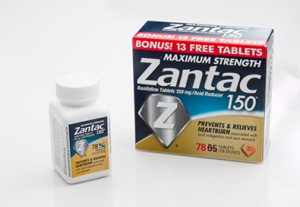 If you take Zantac or ranitidine, it is time to change your medication. On April 1st, the Food and Drug Administration (FDA) asked manufacturers to immediately withdraw all medication from the market. This is due to concerns it contains a chemical which could cause cancer.
If you take Zantac or ranitidine, it is time to change your medication. On April 1st, the Food and Drug Administration (FDA) asked manufacturers to immediately withdraw all medication from the market. This is due to concerns it contains a chemical which could cause cancer.
You will no longer be able to purchase the medication over the counter or refill existing prescriptions, according to the FDA. The agency has recommended alternative medications which you can discuss with your physician. While this announcement may come as a surprise during the COVID 19 outbreak, many had anticipated this move after the FDA’s initial warning last September and the subsequent recall of Zantac, the popular brand name medication, in October. Many other manufacturers have also issued voluntary recalls over the past six months.
The FDA announced testing showed ranitidine contained the contaminant N-Nitrosodimethylamine, or NDMA, which is a probable human carcinogen. The agency said the decision was made on the “best available science.” NDMA is a known environmental containment which is already present in our surroundings. It is found in water, meat, dairy and vegetables, but at low levels is “not be expected to lead to an increase in the risk of cancer,” according to the FDA.
When testing ranitidine, the FDA said it did not observe unacceptable levels in many drug samples. But ultimately, the agency decided the drug should not be available to consumers unless the quality can be assured.
Specifically, testing found the NDMA levels in some products increased in rising temperatures, which may be involved in distribution and a patient’s handling of the drug. And as the ranitidine product aged, so did NDMA levels.
This new FDA announcement will impact many people and present challenges. Patients can usually remember their daily medications. But Zantac is typically a short-term medication which is available in many ways, over-the-counter, by prescription or in a hospital. Because of this, many people may recall suffering from heartburn or a stomach ulcer, but may not remember which medication they took. Another challenge is the medication was sold under many brand names.
If you used Zantac or ranitidine, then experienced cancer or other illness or symptoms, you may want to learn more to guide you in your future medical care. You may also have the right to seek financial compensation to pay for your medical bills and other losses. At Breakstone, White & Gluck, our Boston product liability lawyers are now reviewing cases for patients who may be affected by Zantac and ranitidine injuries. For a free no-obligation legal consultation, call (800) 379-1244 or (617) 723-7676.
Here are a few points to remember:
Look for product names of ranitidine medications
Zantac was widely used. According to USA Today, before recall, there were 15 million prescriptions of Zantac annually. The manufacturer was Sanofi.
However, ranitidine was also sold under other names. It was manufactured by Dr. Reddy’s Laboratories Ltd., which manufactured ranitidine products sold by Dr. Reddy, Kroger and Walgreens. Brand names included American Health Packaging, Glenmark Pharmaceuticals, Precision Dose, Appco Pharma, Sandoz Inc. (a division of Novartis) and Northwind Pharmaceuticals.
Talk to your doctor about your ranitidine use
If you are taking a medication for heartburn or ulcers, carefully read the product labeling to see if it contains ranitidine.
If you are taking a ranitidine medication, stop and contact your primary care physician. The FDA recommends patients take an alternative heartburn medication, such as Pepcid (famotidine), Tagamet (cimetidine), Nexium (esomeprazole), Prevacid (lansoprazole) or Prilosec (omeprazole). Discuss these with your physician. There have been no NDMA impurities found with these products, according to the April 1st announcement.
You may be thinking you don’t want to reach out to your doctor during the COVID-19 emergency, but this type of preventative step is important. You may have other medical conditions or other medications which you need to consider. Your doctor can advise you on how to take your medications safely.
Take care to safely dispose the medication
Due to the COVID 19 outbreak, the FDA is advising consumers to follow the disposal directions on packaging and dispose of medications at home, rather than a drug take-back location in your community.
Zantac lawsuits have already been filed, with more expected
Patients have already filed Zantac lawsuits, alleging Sanofi, the manufacturer, failed to warn consumers that the medication contained NDMA and of potential risks. Our personal injury lawyers are advising and representing Massachusetts residents who may have been affected.
Free Legal Consultation – Breakstone, White & Gluck
With more than 100 years combined experience, Breakstone, White & Gluck represents those injured by defective products, including unsafe medication and defective medical devices in Massachusetts. If you have taken Zantac or another ranitidine medication subject to FDA action, you may have suffered illness and want to learn more about your legal rights. Contact our attorneys now.
For a free legal consultation, call our Boston product liability lawyers at (800) 379-1244 or (617) 723-7676. You can also send a message through our contact form.
Voluntary Safety Standard Unlikely to Prevent Children’s Magnet Injuries, Advocates Warn
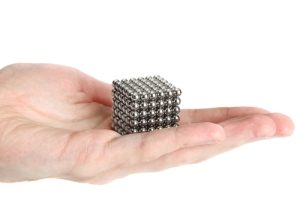
There is a disturbing new report out about children ingesting rare-earth magnet sets at an accelerated rate since 2016, when the industry overturned a federal sales ban in court. The magnet industry now markets these powerful cluster sets to adults, but children continue to swallow them. Parents can take precautions by double checking holiday gifts and discarding any of these products.
The Consumer Product Safety Commission (CPSC) issued a rule banning the small rare-earth magnet sets in 2014 after hundreds of children reportedly ingested the magnets. The rare-earth magnets were (and still are) about 10 times as strong as other magnets. The CPSC’s ban required magnetic parts to have a lower force of attraction of 50 kG² mm² or less.
According to The Washington Post, child ingestions had dropped after the ban was implemented. Injuries dramatically rose between 2017 and 2019, with an estimated 1,580 ingestions this year.
Magnet makers are now working to establish a voluntary safety standard to avoid future attempts at regulation. With the committee votes due in January, The Washington Post reports safety warnings may be added, but actual product changes are unlikely.
The Washington Post reported on many aspects of the process, including:
Voting members. The ASTM International organization oversees the process for creating voluntary safety standards for consumer products. The committee set to vote includes safety advocates and magnet industry officials or those with ties to the industry. CPSC staff is involved, but do not lead the process.
One potential issue is the number of voting members has shifted recently from 36 to 33, according to The Washington Post. The magnet industry can only represent 49 percent of the vote according to ASTM guidelines, but the industry and members with ties to the industry accounted for 55 percent of the vote when the story was published. The newspaper also reported some of the voting members were incorrectly categorized.
No agreement on magnet size. Some of the committee members want to make the magnets too large to swallow and/or decrease the strength to reduce the risk a child’s risk of organ damage. These committee members asked about increasing the magnet size to 1.25 inches in diameter. This would fall more into line with the federal “small parts” law which requires toys to carry a choking hazard warning if any parts fit through a cylinder with this diameter. The bottom of the testing cylinder is slanted, opening 1 to 2.25 inches. The choking hazard warning must also state, “Not for children under 3 yrs.”
Industry officials oppose, saying the proposal would make the tiny magnets six times as large and also increase the magnet force.
The ballot calls for adding new safety warnings on packaging and a change so consumers can visually check that all the advertised magnets are inside the box. There are no other changes.
While a voluntary safety standard should improve safety, a CPSC commissioner told The Washington Post the process can actually cost lives. Rare-earth magnets are just one story when change isn’t about protecting children, but protecting an industry. As a consumer, take time to really read just what the safety warnings and labels say.
The CPSC offers an online database for product recalls and updates. You may find advisories associated with certain types of products before a formal recall occurs. Other organizations – such as Consumer Reports, the American Academy of Pediatrics and Safe Kids – also publish valuable information and insights. Subscribe to newsletters and learn as much as you can about shopping for children’s products and toys.
Breakstone, White & Gluck shares product recalls on our blog and Facebook page. Read more about rare-earth magnets and magnet gifts for children in our recent blog, “Keep Magnet Toys Off Your Holiday Shopping List.”
About Breakstone, White & Gluck – Boston Product Liability Lawyers
With more than 100 years combined experience, Breakstone, White & Gluck has expertise in handling all types of product liability claims, including those involving defective consumer products, dangerous toys, unsafe vehicles and hazardous medical devices. Our Boston product liability lawyers represent clients who have been injured by negligence throughout Massachusetts, from Boston to Plymouth to Cape Cod, Worcester, Western Massachusetts and the North Shore.
For a free legal consultation with one of our attorneys, call us today at 800-379-1244 or 617-723-7676. You can also use our contact form.
Unsafe Magnet Toys Buckyballs are Finally Recalled
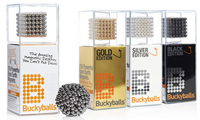 We have written in the past about Buckyballs, a dangerous magnetic desk toy which has injured too many children. Last week came another development, which we hope finally removes this unsafe product from circulation.
We have written in the past about Buckyballs, a dangerous magnetic desk toy which has injured too many children. Last week came another development, which we hope finally removes this unsafe product from circulation.
On May 12, the U.S. Consumer Product Safety Commission (CPSC) announced a voluntary recall for all Buckyballs and Buckycubes. The recall settles an administrative case filed by the CPSC in July 2012. As part of this, Craig Zucker, the former chief executive officer of Maxfield & Oberton Holdings, agreed to establish a Recall Trust. Consumers will be able to request a refund from this fund, which will be controlled by the CPSC. The agency also urges the public to stop using these defective products immediately and look for loose pieces.
Maxfield & Oberton Holdings began selling Buckyballs in 2009. The company said the magnetic desk toy was intended for adults. The problem is if a child starts playing with the tiny magnets, they can swallow them. The magnets can attract inside a child and cause painful intestinal injuries. Surgery is often required and there can be serious longstanding health consequences, such as children having to consume food through a feeding tube.
The CPSC first worked with the company to improve warning labels. The products were marketed for children “Ages 13+” and the CPSC said they should have been marketed for age 14 and up. The company agreed to recall 175,000 magnetic toys and made the change. But the injuries continued. In July 2012, the CPSC filed a lawsuit asking the company to stop sales altogether, a rare legal action the agency has only taken four times in 11 years. The agency alleged that Buckyballs and Buckycubes contained, “a defect in the design, packaging, warnings and instructions, which pose a substantial risk of injury to the public.”
Maxfield & Oberton refused to recall Buckyballs and Buckycubes and in December 2012, the company went out of business. But it was vocal about disagreeing with the CPSC and posted this message on its website:
“Due to baseless and relentless legal badgering by a certain four letter government agency, it’s time to bid a fond farewell to the world’s most popular adult desk toys, Buckyballs and Buckycubes. That’s right: We’re sad to say that Balls & Cubes have a one-way ticket to the Land-of-Awesome-Stuff-You-Should-Have-Bought-When-You-Had-the-Chance.”
In April 2013, six retailers voluntarily recalled Buckyballs and Buckycubes while the CPSC kept trying to raise awareness about the dangers of Buckyballs and other magnetic toys. It established the Magnet Information Center as a consumer resource. Between 2009 and 2011, the CPSC estimates there were 1,700 ER-treated magnet ingestion cases related to high-powered magnet sets.
Zucker will have to eventually fund a website, where consumers can apply for a refund.
Related:
Buckyballs and Buckycubes High-Powered Magnet Sets Recalled Due to Ingestion Hazard; Craig Zucker To Fund A Recall Trust, Settles With CPSC, Consumer Product Safety Commission.
Read More
More than 33,000 Child Car Seats Recalled
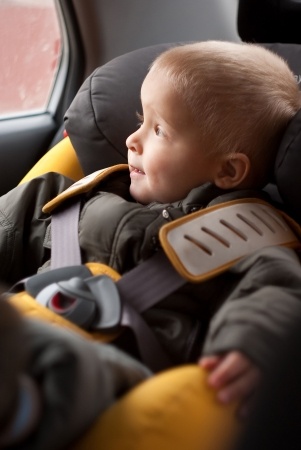 Combi USA announced a recall of over 33,000 car seats last week and said parents should expect repair kits starting in February.
Combi USA announced a recall of over 33,000 car seats last week and said parents should expect repair kits starting in February.
Combi USA recalled its Coccorro, Zeus, Turn and Zeus 360 models made through January 2013. The National Highway Traffic Safety Administration (NHTSA) reports the seat straps do not meet minimum requirements. Children may not be properly secured in case of a car accident.
The Charlotte, N.C. company said one part of the harness failed strength tests, but the harness as a whole meets safety standards. Seats made after January 2013 do not have this defect.
Combi USA will notify owners who have registered their products and mail out free harness replacement kits starting in February.
What to Know About Child Safety Seats
Choosing a safe car seat and learning how to properly install it is a struggle for many parents. There are a number of resources to help make the process easier.
Product Recalls.The Consumer Product Safety Commission (CPSC) website provides updates on product recalls. This recall was reported in the media and not listed on the website, but most recalls can be found there.
NHTSA. The National Highway Traffic Safety Administration provides online resources about child seat safety ratings.
State of Massachusetts. In Massachusetts, children must use some type of child passenger safety seat until they are 8 years old or weigh 57 pounds. All seats must meet federal standards. Read what types are appropriate for each age.
Local Police Departments and Organizations. Your local police may have an officer who has been specially trained to fit car seats. This is a free service.
Related:
Combi USA Recalls More than 33,000 Child Seats, ABC News.
Read More
December Product Recalls Include Holiday Decoration, Baby Carrier
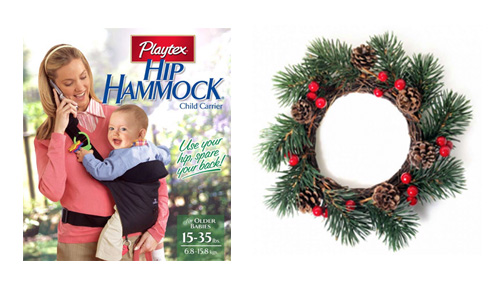 The Consumer Product Safety Commission (CPSC) announced several recalls last week, including a popular holiday decoration and two children’s products. The commission also announced its annual list of winter-related products which were recalled during other seasons.
The Consumer Product Safety Commission (CPSC) announced several recalls last week, including a popular holiday decoration and two children’s products. The commission also announced its annual list of winter-related products which were recalled during other seasons.
Yankee Candle Ring
The Yankee Candle Company recalled about 15,000 pine berry candle rings in the U.S. and 2,000 in Canada. They pose a fire risk because of the synthetic foliage, berries and cones ornamentation. No injuries have been reported. The recalled rings were sold in Yankee Candle and Hallmark stores nationwide from September 2013 through October 2013. They were sold for between $8 and $10 at these stores, as well as through Yankee Candle catalogs and Yankeecandle.com. Consumers are asked to return candles to the nearest Yankee Candle store for a full refund. See the CPSC recall notice.
Playtex Hip Hammock Infant Carriers
Playtex is offering parents a full refund after recalling a baby hammock-style carrier. Playtex Hip Hammock infant carriers were recalled because they pose a fall hazard to children. About 305,000 baby carriers were recalled in the U.S. and 36,000 in Canada.
The company received 87 reports of the product’s buckles cracking or breaking. Two reports involved injuries, including one infant who required care at a hospital emergency room.
Consumers are instructed to stop using the carrier and contact Playtex for a full refund. These carriers were sold from June 2004 to December 2008 in the U.S. and through January 2010 in Canada. Purchase price was about $40 for the basic model and about $60 for the deluxe model.
In the U.S., the baby carrier was sold at Burlington Coat Factory, Target, Amazon.com and other baby and discount stores.
The carriers are designed for children 15 to 35 pounds and are made of a suede fabric in black and navy. They have black, black and white check and burgundy lining on the inside. Read the CPSC recall notice for model numbers.
Cubetensils Children’s Eating Utensils
Edoche Inc. recalled about 1,100 children’s spoon and fork sets because the handle can detach, posing a choking hazard for infants. The Seattle, Wash. company received one report of a handle detaching and a baby putting it in their mouth. No injuries were reported.
The utensils were sold in seven different designs and patterns from May 2012 through November 2013 for about $8 per set. They were sold at retailers and specialty stores nationwide, along with Amazon.com and ebay.com. Consumers can contact Edoche for a full refund. Read the CPSC recall notice for more information.
Consumer Product Safety Commission Website
If you have never used this website, it is a great tool to become familiar with in the New Year. You can find the latest product recalls and more information about ones you learn about in the news. But often, product recalls are not picked up by the news media so it is important to seek out the information yourself periodically. If you use Facebook, you can also stay up-to-date by following our page, where we often report on recalls.
Boston Massachusetts Personal Injury and Medical Malpractice Lawyers | Promote Your Page Too

Here is one page from the CPSC website which may help you now: “Check for These Winter Products Recalled Last Summer.”
Read More
Toys Recalled in Summer 2013 Pose Choking Hazard, Injury Risks
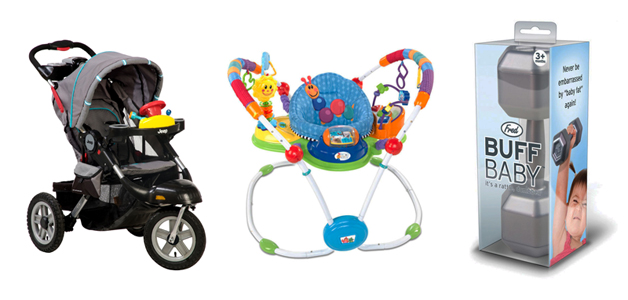
If you have young children, you have probably logged a few hours watching them play this summer. This joy of parenthood comes with an important responsibility: to make sure their toys are safe.
In the United States, the Consumer Product Safety Commission (CPSC) regulates the toy industry. Toys for children 12 and under are required to pass third-party testing and certification, but each year, defective toys still make it to store shelves and cause serious injuries and deaths. In 2011, more than 260,000 children were treated for toy-related injuries in the hospital emergency room and 13 were killed, according to the CPSC.
If you are a parent, be vigilant. Start by inspecting your children’s toys every time they play. Check the age labeling. Make sure they are no small parts that pose a choking hazard. When in doubt, set the toy aside and have your children play with something else.
Another way to protect your children is to stay informed. You may not see every toy recall on the TV news, but can visit the CPSC website and social media sites for news on toy recalls. A few recalls from this summer include:
Baby Einstein Musical Motion Activity Jumpers
Kids II voluntarily recalled about 400,000 Baby Einstein Musical Motion Activity Jumpers earlier this month. Another 8,500 activity seats have been recalled in Canada. The toy is linked to 61 injuries.
The hazard is when infants reach out and play with one of the attached toys (the toy with the smiley face), it rebounds back.
Kids II received 100 incident reports, including the 61 injuries. Injuries included bruises, facial lacerations and a 7-month-old boy who sustained a lineal skull fracture. In one case, an adult suffered a chipped tooth.
Kids II, which is based in Atlanta, Georgia, is the product importer. The toy was manufactured in China prior to November 2011. Kids II will replace the defective part for consumers for free. Many models were sold at Target, Toys R Us and Amazon.com between May 2010 and May 2013. Recall notice.
Kolcraft Jeep Liberty Strollers Kolcraft recalled 96,000 strollers in the United States after 39 reports of defective wheels. The inner tube can rupture, causing the wheel rim to fracture and fly off as a projectile. The reports included 18 injuries, most of which occurred when an adult attempted to fill a tire with air. Children and adults reported suffering lacerations, abrasions and contusions.
The stroller was manufactured in China. Kolcraft Enterprises, Inc. of Chicago, Illinois was the product importer. It was sold at Burlington Coat Factory, Sears and Toys R Us and other retailers from June 2010 to June 2013 for between $150 and $180.
Consumers are advised to stop using the defective stroller and contact Kolcraft for free replacement wheels. Recall notice.
“Buff Baby” Baby Rattles
In June, Fred & Friends announced the voluntary recall of 47,500 “Buff Baby” baby rattles in the United States. The rattles, which are designed to look like a dumbbell weight, are designed for children 3 months and older. The rattles were recalled because they pose a choking hazard to young users. The cap can separate and expose the plastic pellets inside to infants. Fred & Friends received two reports of this happening, but no injuries.
The rattles were sold in specialty toy and baby stores nationwide and in Canada, as well as online through Amazon.com and other websites from October 2011 through June 2013.
Consumers are advised to stop using the rattles and contact Fred & Friends for a full refund. Fred & Friends, which is located in Cumberland, Rhode Island, is the distributor. The toy was manufactured in China. Recall notice.
Thermobaby Bath Seats Recalled Due to Drowning Hazard
The Aquababy Bath Ring was recalled after the CPSC determined it does not meet federal safety standards. The product is supposed to hold children secure in the bath, but the design poses a risk for tipping over.
SCS Direct Inc. of Milford, Conn. voluntarily recalled 7,500 of the bath seats. There were no injuries involved in this recall. The seats were designed for children five months to ten months old. It was sold through Amazon.com. Consumers are advised to stop using the product and contact SCS Direct for a $35 refund. Recall notice.
Read More


